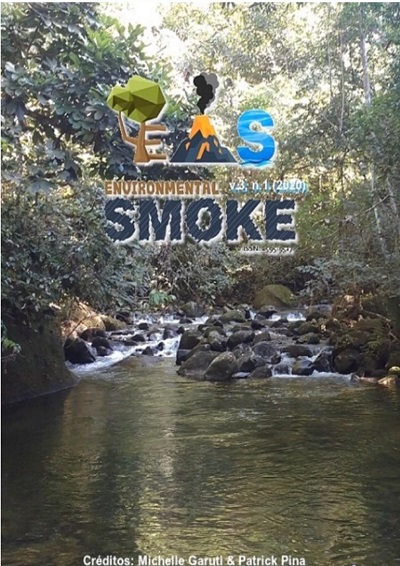CONTAMINATION BY HEAVY METALS AND ITS CONSEQUENCES: REFLECTIONS
Views: 695DOI:
https://doi.org/10.32435/envsmoke.202031101Keywords:
Environmental contamination, Bioaccumulation, Biomagnification.Abstract
Nowadays, the vast majority of aquatic bodies suffer some kind of anthropic influence due to the great expansion of urban areas and consequently industrial areas, with the pollution coming into such environments. One of the types of pollutants present in the environment are heavy metals, which are found naturally in water bodies due to the weathering of rocks and volcanic activities. The present work is of bibliographic nature, based on searches in the bibliography pertinent to the theme. It is possible to state that with anthropic intervention, such metals become common and are found in greater quantities in the environment in a free form. Thus, some of the most common sources of release of heavy metals into the environment are fertilizers, pesticides, coal and oil combustion, vehicular emissions, mining, smelting, refinement and incineration of urban and industrial waste. Thus making contamination of humans with heavy metals more and more common, one of the most common and easy forms of contamination is through food. The absorption of metals by animals can occur in two ways, bioaccumulation and biomagnification. The first occurs through the diffusion or ingestion of the dissolved metals in the water, which occur through the gills or the digestive tract and then lodges in the animals' tissues, so that the organism cannot absorb it, thus obtaining a bioaccumulative character. In the trophic biomagnification or magnification, the concentration of metals in the organism occurs gradually through the trophic levels. The transfer of contaminants through the food chain characterizes such a process that passes from producers to consumers and the longer the chain, the greater the concentration on the final consumer. Therefore, we can emphasize that the concentration and absorption content of such substances are relative and depend on several environmental and physiological factors that vary between species of beings. Metal poisoning can cause serious damage, such as low fertility, decreased immune defenses, reduced growth rate and pathologies that can lead to senescence. Metals can cause different problems in humans, most of which are of a motor nature, as they directly affect the central nervous system (CNS), and can cause memory loss, uncontrolled limb tremors, muscle atrophy, kidney injuries, among others.
Downloads
Downloads
Published
How to Cite
Issue
Section
License
The copyright for manuscripts published in Environmental Smoke belongs to the author, with first publication rights for the journal. The published articles are of total and exclusive responsibility of the authors.
































































